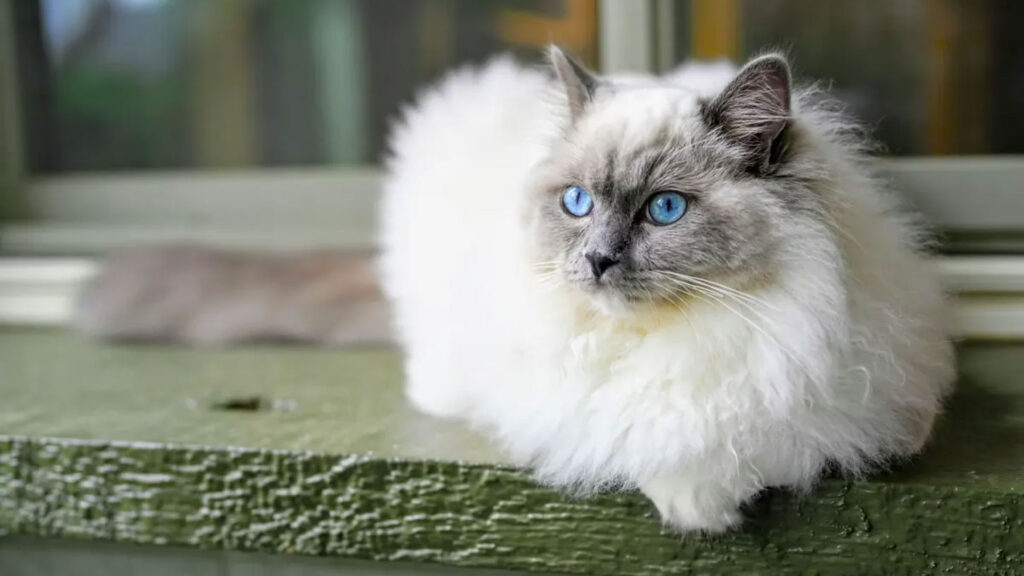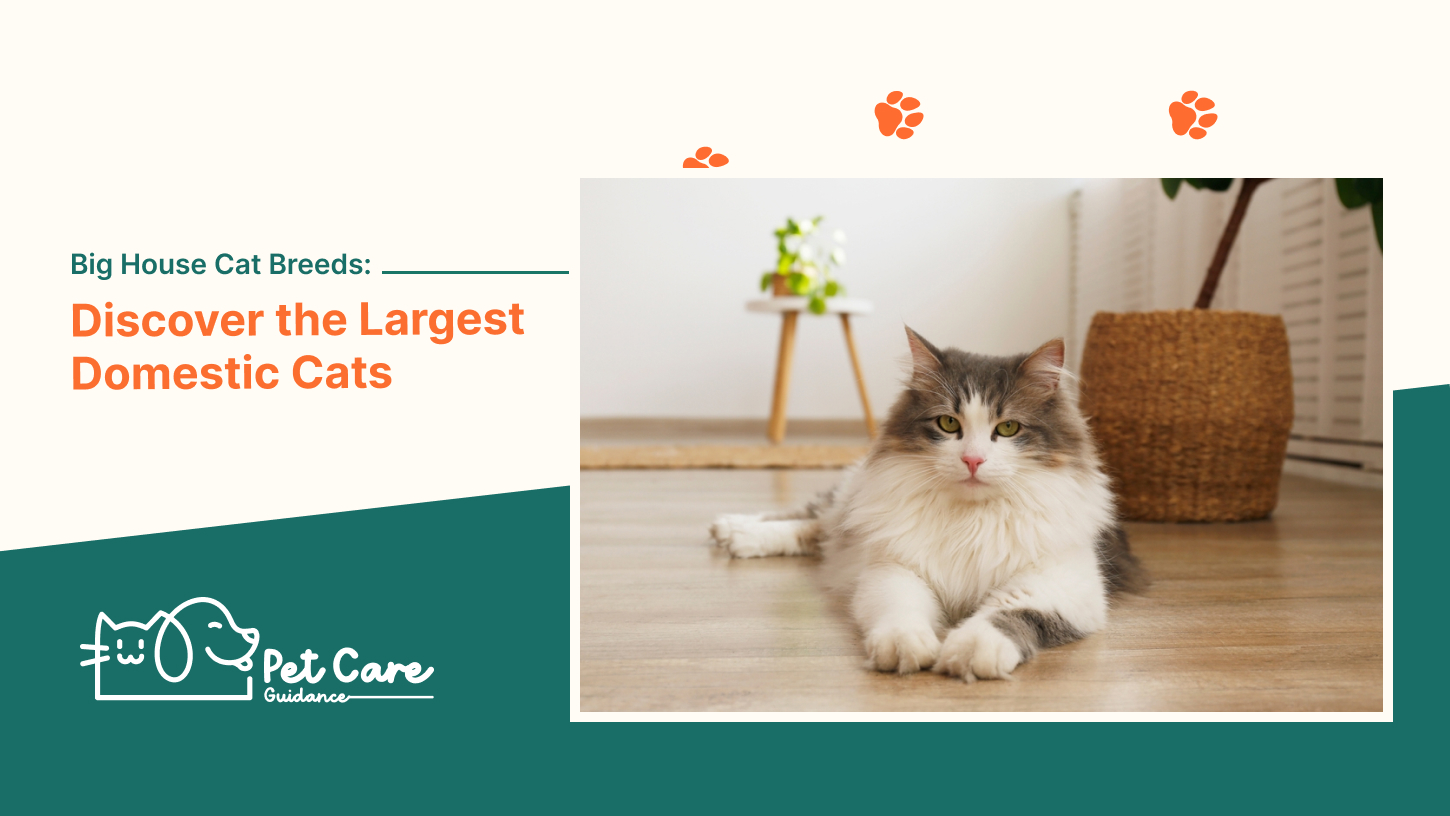The Maine Coon, Savannah cat, Ragdoll, Bengal cat, Persian cat, Norwegian Forest cat, Siberian, British Shorthair, and Chausie are some of the largest domestic cat breeds. These big house cats are known for their larger-than-life size and personalities that match.
Whether you’re looking for a cat with spots, short hair, or exotic features, these breeds offer a variety of options. From their playful nature to their majestic appearance, these big house cat breeds are sure to make a statement in any home.
So, if you’re in search of a furry friend that stands out, consider one of these rare and unique breeds. Whether you’re looking to buy or adopt, there is a big house cat breed out there that’s perfect for you.
Maine Coon The Gentle Giant
| Origins and History of Maine Coon: | Maine Coon cats have a fascinating history that dates back to the early days of America. Legends suggest that they are descendants of domestic cats and raccoons, hence their name. However, this story is purely a myth, as genetics do not support this claim. The true origins of Maine Coon cats are believed to be a mix of domestic cats brought by early settlers and local cats in Maine. |
| Characteristics of Maine Coon: | Maine Coon cats are known for their large size and weight. They can grow up to 16-18 inches in height and weigh between 10-25 pounds. Their physical features include a long and bushy tail, tufted ears, and a prominent ruff around their neck. They have a muscular build, which contributes to their impressive size. |
| Temperament and personality: | Maine Coon cats are gentle and friendly by nature. They are known for their sociable and affectionate behaviour towards their owners and other pets. They enjoy the company of humans and are often considered good family pets. Despite their large size, Maine Coons are gentle giants and generally get along well with children. |
| Caring for a Maine Coon: | Caring for a Maine Coon involves providing them with a balanced diet, regular grooming, and enough space to roam and play. Due to their long, thick fur, they require frequent brushing to prevent matting. It is important to also keep their litter box clean and provide them with regular veterinary check-ups to ensure their overall health and well-being. |

Ragdoll The Floppy Friend
| Origins and History of Ragdoll |
|---|
| The Ragdoll cat breed was developed in the 1960s by a woman named Ann Baker in Riverside, California. The breed is thought to have originated from a white Angora cat named Josephine, who had been injured in an accident and developed a gentle and relaxed temperament as a result. Baker bred Josephine with other cats to create the Ragdoll breed, which got its name from the cat’s tendency to go limp when picked up. |
Ragdolls are known for their large size and striking appearance. They are one of the largest domestic cat breeds, with males typically weighing between 15 and 20 pounds and females weighing between 10 and 15 pounds.
Ragdolls have a semi-long, silky coat and come in a variety of colours and patterns, including seals, blue, chocolate, lilac, and flame. Their fur is dense and requires regular grooming to prevent matting.
Temperament-wise, Ragdolls are known for being laid-back, friendly, and affectionate. They have a calm and docile demeanour and are often described as being “dog-like” in their loyalty to their owners. Ragdolls are typically good with children and other pets, making them a great choice for families.
Caring for a Ragdoll involves providing regular grooming, such as brushing their coat and cleaning their eyes and ears. They also require a balanced diet and regular veterinary check-ups to maintain their overall health.
Savannah Cat The Exotic Beauty
Origins and History of Savannah Cat
The Savannah Cat is a domestic breed that traces its origins back to the 1980s. It is the result of crossing a domestic cat with a serval, a medium-sized wild African cat. The breed was developed to create a cat that has the look of a wild cat but with a domestic temperament.
Characteristics of Savannah Cat
| Size and weight | Physical features | Temperament and personality |
|---|---|---|
| Savannah Cats are known for their large size, with males weighing between 12 to 25 pounds and females weighing between 8 to 15 pounds. |
These cats have a sleek and muscular build, with long legs and a short, spotted coat similar to that of a leopard. |
Savannah Cats are highly intelligent, curious, and energetic. They are known for their playful nature and the strong bond they form with their human companions. |
Caring for a Savannah Cat
Caring for a Savannah Cat involves providing them with regular exercise, mental stimulation, and a high-quality diet. Due to their active nature, it is recommended to provide them with toys and interactive playtime. Regular veterinary check-ups are also essential to ensure their overall
health and well-being.
Frequently Asked Questions On Big House Cat Breeds
What Is The Largest Breed Of Domestic Cat?
The Maine Coon is the largest breed of domestic cat, known for its size and friendly personality.
What Are The Biggest Types Of House Cats?
The Maine Coon, Savannah cat, Ragdoll, Bengal cat, Persian cat, Norwegian Forest cat, Siberian, British Shorthair, and Chausie are the biggest types of house cats. They are larger than life, with personalities to match.
What’s An F1 Savannah Cat?
An F1 Savannah cat is a rare and exotic breed known for its large size and resemblance to a leopard. It is one of the largest domestic cat breeds and can be adopted or purchased as a pet.
What Is The Big House Cat That Looks Like A Leopard?
The big house cat that looks like a leopard is called the Savannah cat. It is a domestic breed known for its wild appearance and spotted coat pattern.
Conclusion
If you’re looking for a big house cat breed to add to your family, you’ve come to the right place. The Maine Coon, Siberian, and Ragdoll are among the largest domestic cat species. With their majestic appearances and loving personalities, they make great companions.
Whether you’re looking for a rare breed or one that’s more easily available, there are plenty of options to choose from. So take your time, do your research, and find the best big house cat breed that suits your lifestyle and preferences.


